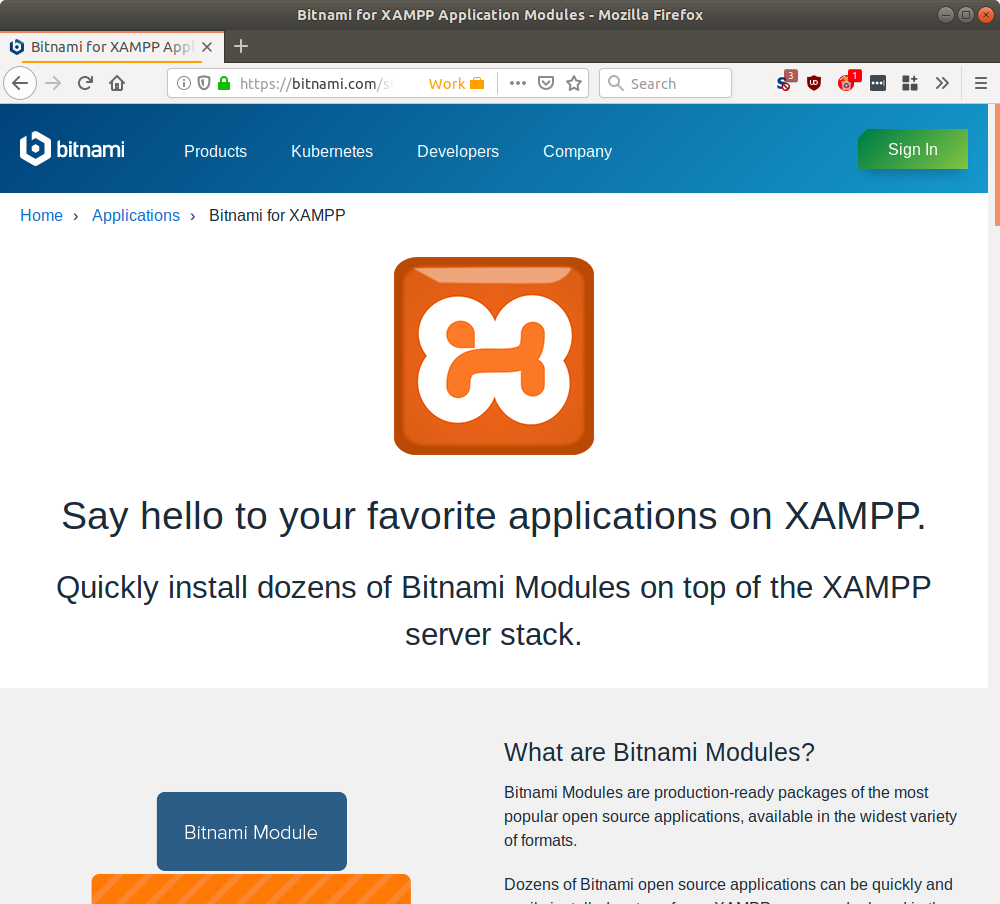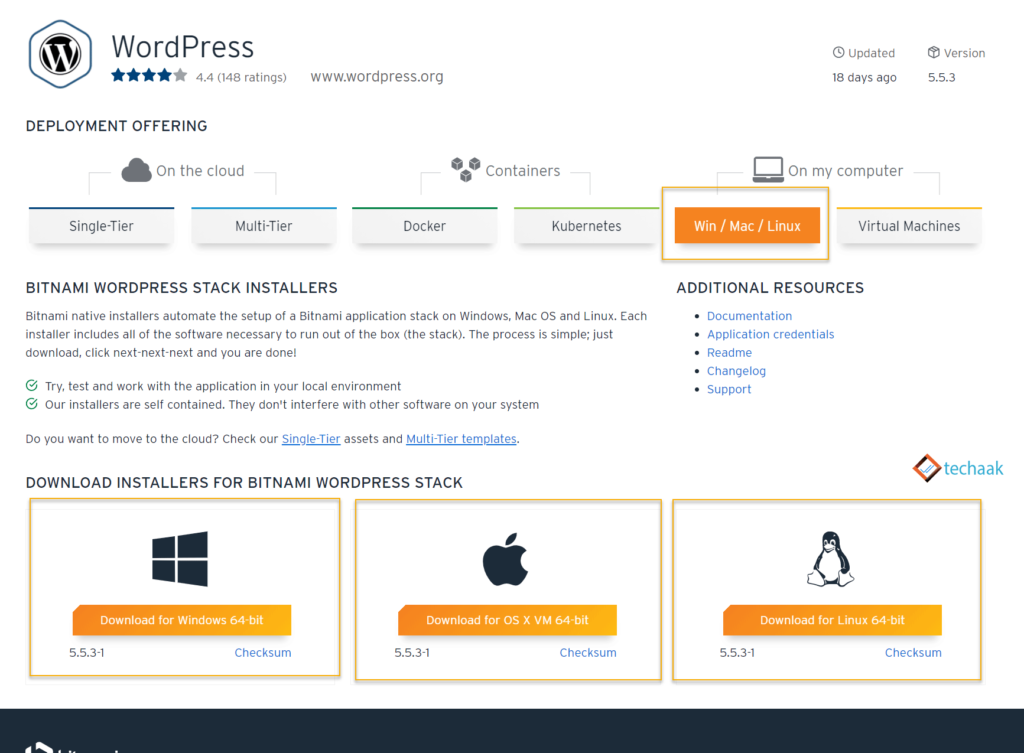Bitnami WordPress Stack Installers Bitnami native installers automate the setup of a Bitnami application stack on Windows, Mac OS and Linux. Each installer includes all of the software necessary to run out of the box (the stack). The process is simple; just download, click next-next-next and you are done! I absolutely love Bitnami due to its sheer simplicity in making the process of setting up a local web stack a complete breeze, especially how adding modules like WordPress, Drupal, Magento etc. Is as easy as installing Skype. There’s one thing that bothers me with the module installers though, is that there’s no multi installation option. Bitnami WordPress Stack WordPress is the world’s most popular blogging and content management platform. Powerful yet simple, everyone from students to global corporations use it to build beautiful, functional websites. Bitnami WordPress Stack for AWS Cloud WordPress is the world’s most popular blogging and content management platform. Powerful yet simple, everyone from students to global corporations use it to build beautiful, functional websites.
You should be able to access phpMyAdmin directly, by browsing to http://127.0.0.1/phpmyadmin.
Log in to phpMyAdmin by using the following credentials:
- Username: root
- Password: The same as the application password. Find out how to obtain application credentials.
The easiest way to upgrade the Bitnami WordPress Production-Ready Stack solution is to upgrade the CloudFormation stack.

Bitnami publishes a new version of the CloudFormation template, updating the AMIs used in it, whenever there’s a new version of the application or any subcomponent (such as PHP, Apache or OpenSSL) included on it. By replacing the template used on your Bitnami WordPress Production-Ready Stack stack, you will upgrade it.
All the data, application files and database, are stored outside the application instances on Amazon EFS and Amazon Aurora (RDS) respectively. Therefore, replacing the AMIs will not result in any data loss.
Update the CloudFormation template
NOTE: It’s highly recommended to create a backup of your database and application files before upgrading your stack. Learn more about creating and restoring application backups.
You can replace the template used on your CloudFormation stack as follows,

Obtain the new template URL from the application page.
Log in to the AWS CloudFormation console and select your stack.
Select the “Actions -> Upgrade Stack” menu item.
On the “Select Template” page, chose the option to “Specify an Amazon S3 template URL” and enter the new template URL you obtained earlier. Click “Next” to proceed.
On the “Specify Details” page, review the configuration parameters (there should be no need to make changes). Click “Next” to proceed.
On the “Options” page, review the tags (if any) and click “Next” to proceed.
Review the details of the template and accept the required terms.
A summary of the change is detailed in the “Preview your changes” section. Review it and click “Update” to proceed.

Amazon Web Services will now begin the upgrade process. It can take some time to complete the upgrade. Use the CloudFormation dashboard to periodically check the status of the upgrade.
Once the stack update is complete, follow these steps:

Log in to the AWS EC2 console.
Choose “Instances” from the navigation panel and ensure that all the application instances use the latest AMI version. You can filter the list using the tags you set when deploying the template.
Terminate any instances using the old AMI. The AutoScaling Group will create new instances automatically using the new AMI.
Log in via SSH to your WordPress instance and use the WordPress CLI tool to update the database schema by running the command below:

Update the plugins and themes via CLI
Plugins and themes are stored in the shared file system and therefore won’t be updated when updating the template. These must be updated manually
The recommended way to update plugins is with the WordPress CLI tool. To update a plugin using WP-CLI, follow the steps below:
Bitnami Wordpress Stack Update
Log in via SSH to your WordPress instance.
List the available plugins with the command below:
The result should be a table like the one below:
Individually update the plugins which have new versions available. For example:
